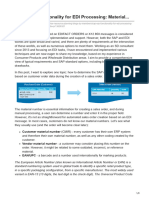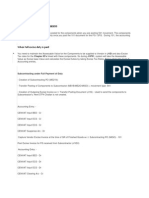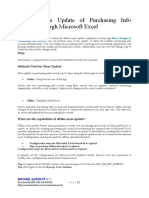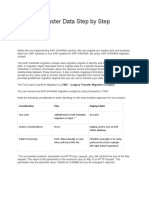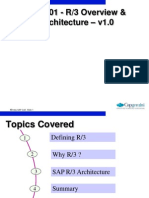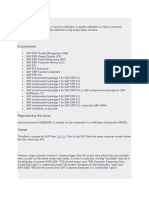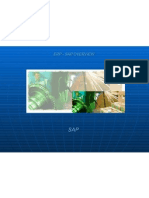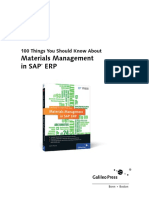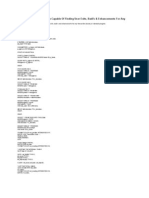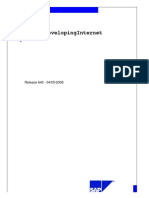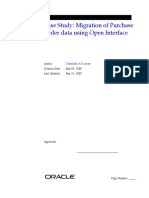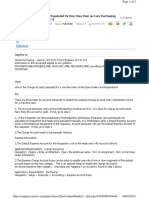What is organizational structure of a
company
• An organizational structure is a system that outlines how certain activities
are directed in order to achieve the goals of an organization. These
activities can include rules , roles and responsibilities. The organizational
structure also determines how information flows between levels within the
company.
• Organizational structures may be centralized or decentralized
• For example, in a centralized structure, decisions flow from the top down,
while in a decentralized structure, decision making power is distributed
amoung various levels of the organizations.
• Organizational structure- Head office, Branches, Departments, Positions,
jobs and tasks.
Types of Organizational Structures:-
There are three main types of organizational structure:-
1. Functional Structure
2. Divisional Structure
3. Matrix Structure
4. Functional Structure: A functional structure is a type of business structure that
organizes a company into different departments based on areas of expertise. These
departments serve as functional units and overseen by functional managers or
department heads
5. 2.Divisional Structure: A divisional structure is a system in which a company
segments its employees based on products or markets, as opposed to their job roles.
6. 3.Matrix Structure: A matrix organization is a structure in which there is more than
one line of reporting managers. Effectively, it means that the employees of the
organization have more than one manager.
1.Functional Structure 2.Divisional Structure
3.Matrix Structure
What is SAP Enterprise Structure:-
An enterprise structure is the structure that represents an enterprise
in SAP ERP system. It is subdivided into various organizational units
which, for legal reasons or business-related reasons, are grouped
together. Organizational units handle specific business functions.
Components of Enterprise Structure:-
• Client
• Company Code
• Plant
• Storage Location
• Purchasing Organization
• Purchasing Group
What is Client?
• In the world of SAP, a client is essentially a self-contained unit within a larger SAP system. Think of
it as a partition that keeps data and configurations separate. Here's a breakdown of the key aspects
of an SAP client:
• Isolation: Each client has its own set of data, which includes master data (think customer or
product information), transactional data (data generated from daily operations), and user profiles
with specific access rights. This isolation ensures that users in one client cannot see or modify data
in another client.
• Multiple Uses: SAP clients can be used for various purposes. For instance, a company can create
separate clients for development, testing, and production purposes. This allows developers to
make changes in the development client without affecting the live data in the production client.
• Cost-Effectiveness: The concept of clients is particularly beneficial for Application Service Providers
(ASPs). By utilizing clients, ASPs can manage numerous customers within a single SAP system,
eliminating the need for separate installations for each client. This translates to reduced costs for
both the ASP and the clients.
• Examples: Here are some real-world examples of how clients might be used:
• A large corporation with multiple subsidiaries can establish a separate client for each subsidiary, keeping
their data segregated.
• A company can set up a client specifically for training purposes, allowing new users to practice in a safe
environment with dummy data.
What is Company Code?
• A company code in SAP is the fundamental building block for external accounting. It
represents the smallest organizational unit within a company that can maintain a complete
set of accounts for financial reporting purposes. Here's a breakdown of its key features:
• External Accounting Focus: Company codes are primarily concerned with financial data used
to generate reports for external stakeholders like investors, regulators, and tax authorities.
• Self-Contained Unit: Each company code functions as an independent entity within the SAP
system, allowing for separate financial statements.
• Legal Entity Representation: A company code can represent a legally recognized entity
within a corporation, such as a subsidiary with its own reporting requirements.
• Local Currencies: While a company might share a Chart of Accounts (COA), each company
code can have its own local currency for transactions.
• Foundation for Financial Structure: Defining company codes is crucial for setting up SAP's
financial accounting (FI) module. It's the first step in establishing the organization's financial
structure.
• In essence, company codes provide a way to compartmentalize financial data within a larger
organization, ensuring accurate reporting for individual entities and compliance with local
regulations.
What is Plant?
• In the context of SAP, a plant refers to a specific location that deals with manufacturing. It's more than
just a production facility though. Here's a breakdown of what a plant encompasses in SAP:
• Manufacturing Location: A plant is the physical place where a company manufactures its products.
This includes the buildings, equipment, and personnel involved in the production process.
• Inventory Storage: Finished products are often stored temporarily at the plant before being shipped to
warehouses or customers.
• Inventory Valuation: The value of a company's inventory is typically tracked and managed at the plant
level.
• Other Functions: Plants can also be involved in other functions such as procurement (purchasing
materials), sales (fulfilling customer orders), and maintenance (upkeep of equipment).
Here are some additional points to consider about plants in SAP:
• A plant can be assigned to a single company code.
• MRP (Material Requirements Planning) is often run at the plant level to determine material needs.
• Plants can be used for various purposes beyond just production, such as head offices or warehouses.
What is Storage Location?
• In SAP, a storage location is essentially a designated physical area within a plant where
inventory is stored and managed. It functions like a warehouse section or a specific zone
within a larger facility. Here's a breakdown of the key points:
• Inventory Management: Storage locations are crucial for keeping track of stock levels at a
granular level within a plant. This enables better inventory control and facilitates tasks like
cycle counting during physical inventories.
• Plant Hierarchy: Storage locations are subordinate to plants in SAP. A plant can have one or
more storage locations, but at least one storage location is mandatory for every plant.
• Uniquely Identified: Each storage location has a unique four-character alphanumeric code
within a plant. This code helps in swift identification and organization of inventory.
• Storage Specifics: You can define certain storage-related information for each location, such
as special storage conditions (e.g., temperature-controlled) or restrictions on certain
materials.
• Material Management: Storage locations play a vital role in the Material Management
(MM) module of SAP. They are the lowest level at which inventory quantities are maintained
in the system (unless the Warehouse Management (WM) module is active, then bin level
becomes the lowest).
What is Purchasing Organization?
• A Purchasing Organization in SAP is a key element within the Materials Management
(MM) module. It acts as a central unit responsible for managing all procurement
activities for one or more plants within a company. Here's a breakdown of its
functionalities:
• Negotiating purchase terms: The purchasing organization negotiates pricing, delivery
schedules, and other terms with vendors for the goods and services required by the
plants it's assigned to.
• Placing orders: It initiates the process of creating purchase orders (POs) for the required
materials. This involves sending requests for quotations (RFQs) to vendors, evaluating
responses, and finalizing the PO with the chosen vendor.
• Contractual responsibility: The purchasing organization holds legal responsibility for
ensuring that purchase contracts are fulfilled as agreed.
• Data and reporting: It maintains a central record of all purchasing activities, including
purchase orders, contracts, and communication with vendors. This data is used for
generating reports that provide insights into purchasing trends, spending patterns, and
vendor performance.
What is Purchasing Group?
• In SAP, a Purchasing Group refers to a team (or even a single person) responsible for
procurement activities within the organization. They handle specific aspects of purchasing, like:
• Acquiring materials or categories of materials: A purchasing group might specialize in certain
materials based on type, function, or supplier.
• Being the point of contact for vendors: They manage communication and negotiations with
vendors for their assigned materials.
• Here's a breakdown of how Purchasing Groups function in SAP:
• Organizational Level: Purchasing Groups are independent entities within the overall purchasing
structure. They aren't directly tied to a specific company code, plant, or purchasing organization.
• Functionality: Purchasing Groups can operate strategically or operationally, or both. Strategically,
they might manage master data and control data for purchasing, including setting up outline
agreements or volume rebate arrangements. Operationally, they focus on day-to-day activities
like creating purchase orders and requisitions, or sending requests for quotations to vendors.
• Integration: Purchasing Groups are assigned to Purchasing Areas within SAP. They act as a
selection criteria for reports, analyses, and authorization controls.
